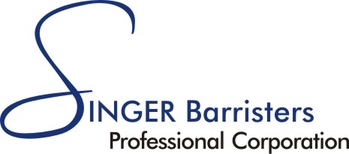When choosing a personal injury lawyer, you may be tempted to select the lawyer who promises to get you the most money in the least amount of time. Resist the temptation to make your choice in that manner, as you will surely be disappointed.
The two most common questions I am asked by potential new personal injury clients (and my answers) are:
• How much money is my case worth? (I don’t know).
• How long will it take until we settle? (I don’t know).
You may advise me that another lawyer — or worse, your friend who had his own personal injury case — told you your case was worth a particular amount, and you want to know if I will get you that or more.
I will tell you, without knowing any of the facts, that the other lawyer (or your friend) is wrong. At the initial client interview, it is impossible to know. And you should be wary of any lawyer prepared to answer those questions with any certainty.
I will only know at the beginning of your case what you tell me. I will not have heard the position of the other party you wish to sue. I will not have reviewed your medical history. I will not have had the benefit of reviewing your income tax returns or other supporting basis. What you tell me is less important than what the actual documents prove.
There are many factors that go into determining the value of a personal injury case. Assessing damages in a personal injury case is more art than science and oftentimes it appears to be abstract art at that.
Here are just some of the factors at play in determining the value of your lawsuit:
1. The nature and extent of your injuries — Under the Insurance Act in Ontario, not all injuries are compensable. The law expects that some injuries, or some level of pain, is something you will simply have to live with and for which nobody has to compensate you. Recent case law from the Superior Court of Justice indicates the level to which your injuries must rise to in order for you to be compensated is on an upward trend. This is good news for insurers, but bad news for you when you show up at my office and think your sore neck and back pain is worth six figures when your income has not been affected.
2. What your own medical practitioners write in their notes about your injuries — For example, you may feel constant pain, but your family doctor may use words such as “minor” in her clinical notes. This will definitely hurt your case. Sadly, soft tissue injuries that cause real pain do not show up on diagnostic imaging or other objective tests.
3. How often you attend treatment — Many of my clients stop going to doctors and rehab clinics after a few months either because (i) the treatments are no longer effective; (ii) they simply do not have time; or (iii) they can no longer afford to cover the out of pocket cost of non-OHIP covered treatments, such as physiotherapy and massage therapy. Your failure to continue treatments for whatever reason may impact what an insurer has to pay at a later stage in the proceeding.
4. If you are claiming lost income, the amount of income you filed for tax purposes in previous years — This is especially important if you are in the service industry, as a large portion of your real income is derived from tips, yet your income tax returns rarely reflect this. Similarly, the true income of self-employed small business owners is significantly less than would appear from the pre-accident income tax returns.
5. The statutory deductible — The Insurance Act mandates that if your personal injury case arises from a car accident (as opposed to a slip and fall), the first $37,000 (approximate) in damages for pain and suffering is deductible. This means simply that the insurance company does not have to pay any amounts up to the deductible. Since the majority of soft tissue injury cases are worth less than $50,000 for the pain and suffering component, you can see how this deductible has a very real impact, often to the point of deserving parties obtaining nothing more than a negligible amount.
6. Your own evidence — What you tell me is less important than what you eventually state “on the record” at examination for discovery or trial or in statements given to doctors or insurers.
For all those reasons, you can understand why it is almost impossible to give you an accurate picture of how your case will shake out when we first meet
As such, resist the urge to hire the lawyer who promises the largest payout. Instead, make sure your lawyer seems like he or she will empathize with your situation while also having the experience to give you the right advice at the right time.
